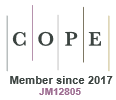Just Accepted
This article has been peer reviewed and accepted for publication. It is in production and has not been edited, so may differ from the final published form.
Expression of irisin in the porcine pituitary gland during the oestrous cycle and early pregnancy: the role of GnRH, gonadotropins, and insulin
Abstract
Context: Metabolic status significantly affects female reproductive function, with both excess and deficiency of body fat negatively impacting fertility. Irisin, a hormone secreted by muscle and fat tissue, is linked to metabolism and reproduction, but its role in the pituitary gland remains unclear. Aims: This study investigated the expression of irisin and its receptor (integrin αV/β5) in the anterior (AP) and posterior (PP) lobes of the porcine pituitary during the oestrous cycle and early pregnancy. We hypothesised that they are localised in specific pituitary cell types and that gonadotropin-releasing hormone (GnRH), luteinising hormone (LH), follicle-stimulating hormone (FSH), and insulin modulate irisin expression and secretion by AP cells. Methods: The expression of irisin and integrin αV/β5 was analysed using qPCR and Western blotting. Immunofluorescence was used to determine colocalisation with pituitary hormones. AP cells were cultured in vitro and treated with GnRH, LH, FSH, or insulin to assess their effects on irisin protein levels and secretion. Key results: Irisin and its receptor were expressed in both AP and PP lobes and colocalised with all major trophic cell types. Their expression varied depending on the reproductive stage. GnRH, LH, FSH, and insulin inhibited irisin secretion by AP cells during the luteal phase, while only insulin had an effect during the follicular phase. Conclusions: Irisin and its receptor are expressed in a hormone-dependent manner and localise to specific pituitary cell types, suggesting intra-pituitary regulatory roles. Implications: These findings indicate that irisin may act as a local modulator of pituitary function and reproductive hormone regulation, linking metabolic and reproductive health.
RD25057 Accepted 26 July 2025
© CSIRO 2025



